
That little scrape from a fall, a kitchen mishap, or a forgotten bump. We’ve all been there, right? You carefully clean it, slap on a bandage, and hope for the best. While most minor wounds heal without a hitch, what happens when that small injury starts to look…off? Maybe it’s the redness spreading, the throbbing pain that won’t quit, or even a concerning sign of pus. These are the potential red flags that your wound might be fighting a battle against an infected wound.
We know you want to feel better, faster. That’s why knowing how to provide Home Wound Care correctly is critical. The goal here is to ensure your body’s healing processes can work effectively, without the discomfort and setbacks caused by complications like a serious wound infection.
Today, we’re diving deep into practical, tried-and-true Home Wound Care hacks. We’ll equip you with the knowledge to spot the early warning signs of an infected wound, understand what makes a wound heal faster, and share simple strategies to keep those pesky bacteria at bay. Get ready to become your own best wound-care ally and discover how to promote fast healing cream for wounds and overall recovery! We’ll talk about essential wound healing medicine and how to best support your body’s natural defenses.
Understanding the Basics: What Your Wound Needs to Heal
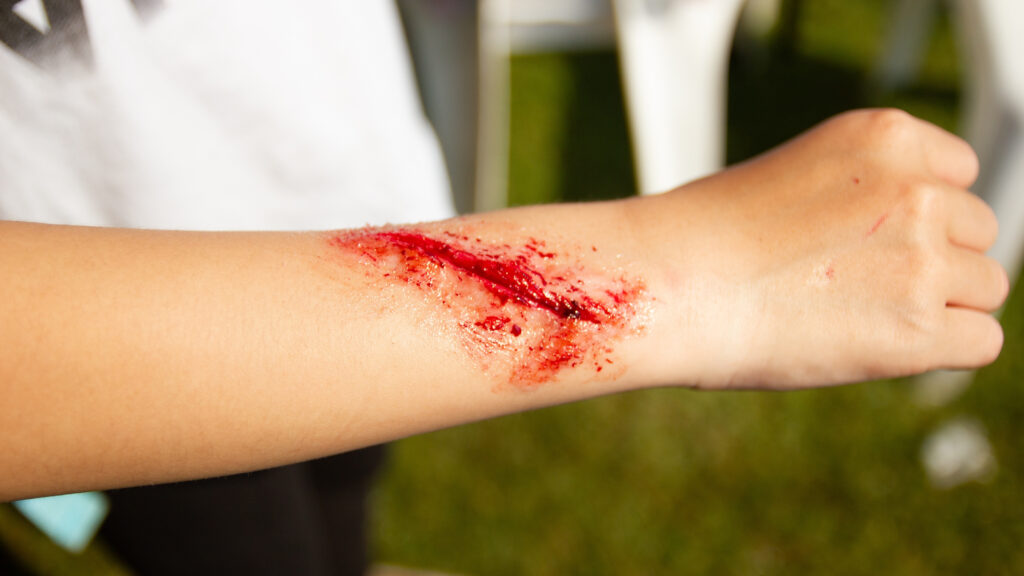
Before we jump into the hacks, it’s super helpful to understand what’s actually happening when you get a cut or scrape. Think of your body as a super-efficient repair shop, and knowing how it works makes your Home Wound Care even more effective.
The Body’s Amazing Healing Process
When you injure your skin, your body kicks into action with a remarkable, multi-step repair process. It’s like a finely tuned orchestra playing a symphony of healing!
- The Cleanup Crew (Inflammation): First, your body sends in the “cleanup crew.” Think of it as a temporary, controlled inflammation. This stage brings in special cells to clear away debris and damaged tissue, and it’s why you might see a little redness and swelling right after an injury. It’s a necessary first step!
- The Rebuilders (Proliferation): Next, the “rebuilders” arrive. New tissue starts to form, blood vessels grow, and the wound begins to close up, like a tiny construction project. This is where things really start to knit back together.
- The Smoothe-Out Team (Remodeling): Finally, the “smoothe-out team” gets to work. This is the longest phase, where the new tissue strengthens and reorganizes, gradually making the scar less noticeable.
The most important thing to remember is that good Home Wound Care isn’t about interfering with these natural stages. It’s about creating the ideal environment for your body to do its amazing work, helping it heal faster and preventing any unwelcome visitors.
The Enemy: Why Infections Happen
Now, let’s talk about the unwelcome guests that can crash your body’s repair party: germs. A wound infection happens when harmful bacteria, fungi, or viruses manage to get into your wound. These tiny invaders can slow down healing, cause more pain, and turn a simple scrape into a bigger problem.
- Common Culprits: You’ve probably heard of bacteria like Staphylococcus (Staph) or Streptococcus. These are common on our skin and in the environment. They’re usually harmless when our skin is intact, but they can cause a significant infected wound if they find an opening.
- Risk Factors: Certain factors make a wound more likely to develop an infection. Deep cuts that go beyond the surface, wounds that are contaminated with dirt or debris (like a garden scrape), or if your immune system is a bit run down, all increase the risk. This is precisely why diligent Home Wound Care is so crucial.
Spotting Trouble: Early Signs of an Infected Wound
Catching an infected wound early is key to dealing with it effectively. Your body usually gives you some clear signals. Don’t ignore these!
Here are the tell-tale signs to watch out for:
- Spreading Redness: The redness around the wound starts to expand outwards, like a growing blush.
- Increased Pain or Tenderness: The wound feels more painful than it should, or it becomes tender to the touch.
- Swelling That Worsens: The area around the wound gets puffier, or the swelling doesn’t go down as expected.
- Warmth: The skin around the wound feels noticeably warmer than the surrounding skin.
- Pus or Foul Discharge: You see thick, cloudy fluid (pus) draining from the wound, or it has an unpleasant smell.
- Fever: You start feeling generally unwell, with a fever, indicating your body is fighting a systemic infection.
If you notice any of these, it’s your cue to pay closer attention and consider seeking professional advice. Early detection can make all the difference in preventing a minor issue from becoming a major concern.
The Foundation of Great Home Wound Care
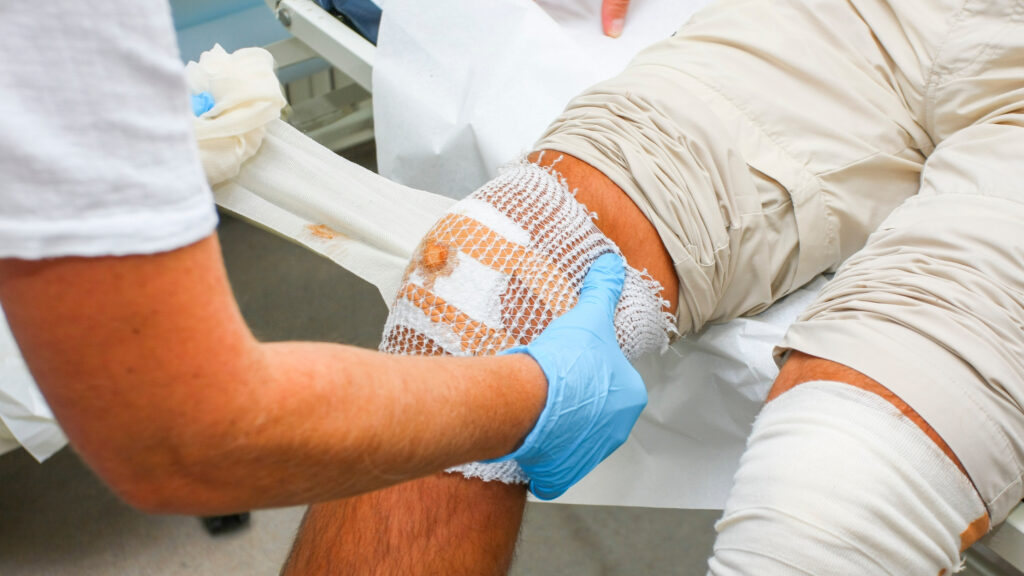
Now that we understand the amazing work your body does and the tiny invaders to watch out for, let’s get down to the nitty-gritty of what actually helps your wounds heal well and prevents that dreaded wound infection. This isn’t complicated, but doing it right makes a world of difference.
Cleanliness is King: The Golden Rule
If there’s one thing to take away from wound care, it’s this: Wash your hands! Before you even think about touching a wound, whether it’s yours or someone else’s, thoroughly wash your hands with soap and warm water. Spend at least 20 seconds scrubbing.
Why is this so paramount? Our hands carry countless bacteria and other microbes. Touching a wound with unwashed hands is like directly inviting those unwelcome guests into your body’s repair site, significantly increasing the risk of an infected wound. And just as importantly, wash them after you’ve finished cleaning or dressing the wound to prevent spreading anything.
The Right Way to Clean a Wound
Cleaning a wound seems straightforward, but there’s a gentle art to it to ensure you’re helping, not harming, the healing process.
Gentle is Key: You might think scrubbing is the way to get things really clean, but for minor wounds, harsh scrubbing can actually damage the delicate new tissue trying to form. This can delay healing and even make the wound more susceptible to wound infection. The goal is to remove visible dirt and debris without causing further irritation.
Choosing the Right Cleaning Solution:
- Plain, Cool or Lukewarm Water: For most minor scrapes and cuts, clean running water is your best friend. It’s simple, effective, and readily available. It helps to gently wash away dirt and bacteria without irritating the healing skin.
- Saline Solution: For a slightly more sterile option, especially if you’re concerned about tap water, a simple saline solution works wonders. You can buy sterile saline wound wash from most pharmacies, or easily make your own at home: dissolve ¼ teaspoon of non-iodized salt in 1 cup of boiled and cooled water. This is a gentle yet effective way to cleanse.
- When to Avoid Certain Antiseptics: While they sound powerful, things like hydrogen peroxide and rubbing alcohol can actually be too harsh for minor wounds. They can kill healthy cells that are crucial for healing and may even delay the process. Save these for when a healthcare professional recommends them for specific situations. Stick to water or saline for everyday Home Wound Care.
Once cleaned, gently pat the area dry with a clean cloth, sterile gauze pad, or even a soft paper towel. Avoid rubbing, as this can also irritate the wound.
The Art of Bandaging: More Than Just Covering
Once clean and dry, it’s time to protect your wound. Bandaging isn’t just about keeping dirt out; it plays a crucial role in the healing environment.
Why Bandages Matter: A good bandage protects the wound from further injury, prevents contamination by airborne germs (a major factor in wound infection), and importantly, helps maintain a moist wound environment. This controlled moisture is actually what promotes faster healing – contrary to the old belief that wounds need to dry out! It’s all about creating an ideal internal climate for repair.
Choosing the Right Bandage:
- Size: Make sure the bandage is large enough to cover the entire wound and extend a little beyond its edges.
- Material: Breathable materials like fabric or porous plastic allow air to circulate, which is good for healing.
- Adhesive: Choose an adhesive that’s gentle on your skin, especially if you have sensitive skin.
How to Apply Correctly:
Position the sterile pad of the bandage directly over the wound. Then, secure the adhesive strips smoothly around it. The bandage should be snug enough to stay in place and provide protection, but not so tight that it restricts blood flow or causes discomfort. You shouldn’t feel it digging into your skin.
When to Change a Bandage:
A general rule of thumb is to change your bandage at least once a day. However, you should also change it immediately if it becomes wet or dirty. A damp or soiled bandage can become a breeding ground for bacteria, increasing the risk of an infected wound. So, keep an eye on it and change it as needed to maintain that clean, protective barrier.
By mastering these fundamental steps of Home Wound Care, you’re setting the stage for optimal healing and significantly reducing your chances of encountering a wound infection.
Home Wound Care Hacks for Faster Healing and Infection Prevention
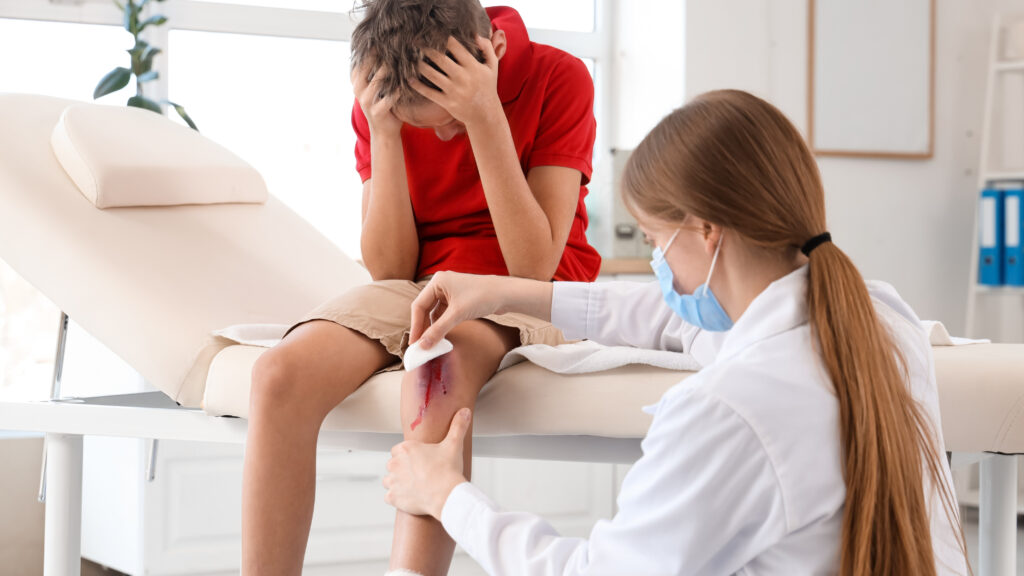
Okay, you’ve got the basics down. Now let’s talk about those clever little strategies – the Home Wound Care hacks – that can really boost your healing and keep that pesky wound infection at bay. Think of these as your secret weapons for a speedy recovery!
Hack 1: Harnessing the Power of Moisture
The old advice was “let it dry out,” but we now know that a slightly moist environment is actually a superhero for healing!
The “Moist Wound Healing” Concept: When a wound is kept a little moist (not soaking wet!), it actually heals up to 50% faster. Why? It keeps the new cells that are trying to grow from drying out and dying. It also helps prevent that protective scab from forming too thickly, which can sometimes slow things down.
Introducing Fast Healing Cream for Wounds and Ointments: This is where your everyday products come into play. Applying a thin layer of the right ointment creates that perfect moist barrier.
- Petroleum Jelly (Vaseline): Don’t underestimate this classic! It’s incredibly accessible, inexpensive, and works by creating a physical barrier that locks in moisture. It’s a safe and effective way to keep a minor wound from drying out, thus supporting healing and preventing a wound infection.
- Antibiotic Ointments (like Neosporin): These are specifically designed as a wound healing medicine to help prevent and fight bacterial infections. For cuts, scrapes, or burns, applying a thin layer can add an extra layer of protection against germs. Just be sure to use them as directed.
- Products that Act as a Wound Healing Medicine: Beyond basic ointments, some products are formulated with ingredients aimed at promoting cell regeneration or providing a more robust protective barrier, essentially acting as targeted wound healing medicine to speed up the process and deter infection.
These simple applications create a protective shield, keeping the wound from drying out and making it a more welcoming place for those healing cells to do their job.
Hack 2: Natural Allies for Your Skin
Nature often provides some of the best remedies!
- Honey: Yes, good old honey! Medical-grade honey (especially Manuka honey) has been used for centuries because it possesses natural antibacterial properties and can help create a moist healing environment. It’s like a sweet, sticky guardian against wound infection.
- Aloe Vera: Known for its cooling and soothing effects, pure aloe vera gel can also reduce inflammation and promote skin regeneration. It’s particularly nice for minor burns and can offer comfort while aiding healing.
Disclaimer: When using natural remedies, always opt for pure, topical forms. Ensure honey is specifically labeled for wound care, and use fresh gel directly from the plant or a reputable product free of additives.
Hack 3: The Importance of Elevation and Rest
Sometimes, the best healing hack is simply giving your body a helping hand.
- Elevation: If your wound is on an arm or leg, try to keep it elevated above the level of your heart. This simple trick helps reduce swelling by allowing excess fluid to drain away from the injured area. Less swelling means better blood circulation, which brings the oxygen and nutrients your wound needs to heal faster.
- Rest: While we don’t mean bed rest for a small cut, it’s important to avoid unnecessary pressure or irritation on the wound. If it’s on a joint, be mindful of its movement. Give your body the downtime it needs to focus on repair, not on constantly re-injuring the area.
Hack 4: Nutrition for the Internal Healer
What you eat is a powerful form of Home Wound Care that works from the inside out!
- What You Eat Matters: Your body needs building blocks to repair itself. Protein is essential for rebuilding tissues. Vitamin C is crucial for collagen formation, a key component of healthy skin. Vitamin A supports immune function and new skin growth, and zinc plays a vital role in wound healing and immune response.
- Simple Dietary Tips: Focus on a balanced diet rich in lean proteins (chicken, fish, beans), fruits and vegetables (especially citrus, berries, leafy greens), and nuts and seeds. Staying hydrated with plenty of water is also fundamental for overall bodily function, including wound repair.
Hack 5: Temperature Play: Cold vs. Warm
Temperature can be a useful tool in managing wound comfort and healing.
- Cold Packs: For the first 24-48 hours after an injury, a cold pack (wrapped in a cloth to protect your skin) can be wonderful for reducing swelling and numbing any initial pain. This helps calm down the inflammatory response.
- Warm Compresses: After the initial inflammatory phase, a gentle warm compress might be beneficial. It can help encourage blood flow to the area, bringing more oxygen and healing factors. Some people find they help to gently draw out minor impurities or loosen dried discharge – though use these with caution, and avoid making the compress too hot, which could cause burns. Always test the temperature on your wrist first.
Hack 6: Keeping it Covered, But Letting it Breathe
It’s all about finding that perfect balance between protection and ventilation.
- The Balance: A good bandage protects the wound from friction, dirt, and further contamination that could lead to an infected wound. However, completely sealing off a minor wound for extended periods isn’t always necessary.
- When to Air Out: For very minor, clean cuts or scrapes that are already starting to heal and aren’t in an area prone to friction or contamination, you might consider leaving them uncovered for short periods during the day. This allows the skin to breathe.
- When to Keep Covered: Crucially, if the wound is in an area where it’s likely to get dirty, or if it’s still fresh and open, keep it covered with a clean bandage. This is your primary defense against bacteria and debris that could cause a wound infection. Always err on the side of caution if you’re unsure!
By incorporating these smart Home Wound Care hacks, you’re not just treating a wound; you’re actively supporting your body’s incredible ability to heal itself, quickly and efficiently, and keeping that wound infection far away.
Common Mistakes to Avoid with Home Wound Care
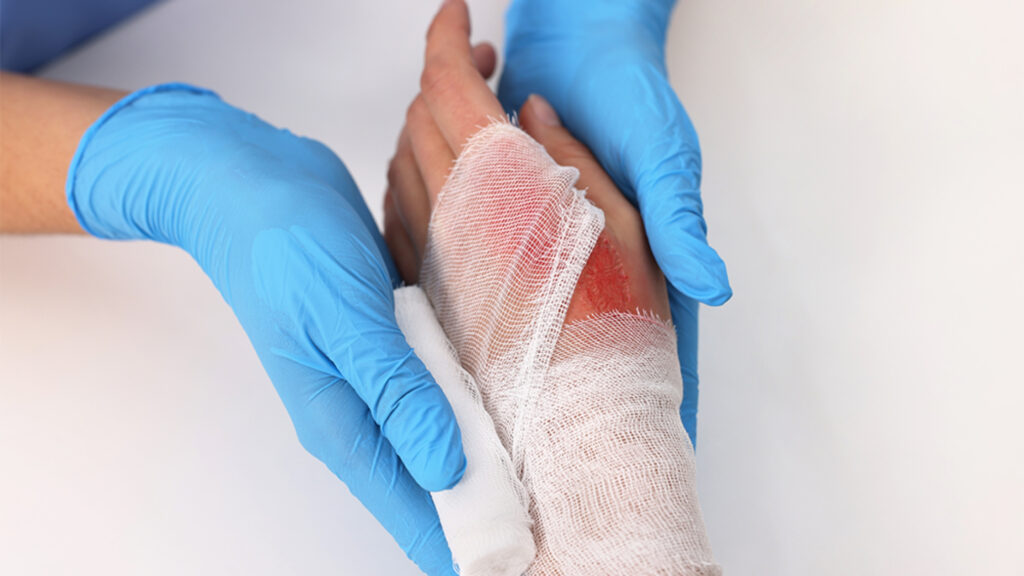
Now that you know what to do to promote healing and prevent an infected wound, let’s highlight some common pitfalls. We want to ensure you’re steering clear of these practices that can actually set you back on your Home Wound Care journey.
Mistake 1: Over-cleaning or Scrubbing Too Hard
We understand the desire to be extra thorough, but when it comes to minor wounds, gentleness is key.
Remember, harsh scrubbing can damage the delicate new cells that are trying to form. This can actually delay healing and make the area more susceptible to wound infection. So, resist the urge to scrub aggressively! Instead, use a gentle touch and a clean cloth or gauze pad to remove dirt and debris with cool water or saline solution.
Mistake 2: Using Harsh Antiseptics on Minor Wounds
It’s tempting to reach for the hydrogen peroxide or rubbing alcohol, thinking they’ll blast away all the germs. However, these strong antiseptics can actually do more harm than good when it comes to minor cuts and scrapes.
While they kill bacteria, they can also damage healthy tissue that’s essential for the healing process. These harsh chemicals can irritate the wound, slow down healing, and sometimes even increase the risk of a wound infection. Stick to gentler options like water or saline unless specifically instructed otherwise by a healthcare professional.
Mistake 3: Picking or Scratching at the Wound/Scab
Oh, the temptation! We’ve all been there. But picking at a scab or scratching an itchy wound is a big no-no.
When you pick at a scab, you’re not just removing a protective layer; you’re potentially reopening the wound, disrupting the healing process, and introducing new bacteria. This drastically increases the risk of an infected wound and can even lead to scarring. Let your body do its thing – resist the urge to interfere!
Mistake 4: Ignoring Signs of Infection
This is arguably the most critical mistake to avoid. Early detection of a wound infection can make a world of difference in preventing complications.
If you notice any of the tell-tale signs we discussed earlier – spreading redness, increased pain, swelling, pus, or fever – don’t wait! Contact your healthcare provider promptly. They can assess the situation and recommend the appropriate treatment, which may involve antibiotics or other interventions. Remember, it’s always better to err on the side of caution.
Mistake 5: Using Old or Expired Wound Care Products
Just like the food in your pantry, wound care products have expiration dates. Using old or expired creams, ointments, or bandages can be ineffective or even harmful.
Over time, the active ingredients in fast healing cream for wounds or antibiotic ointments can degrade, rendering them less potent. Expired bandages may also lose their sterility or become contaminated. So, before you reach for that tube of ointment or open a bandage, always check the expiration date. If it’s past its prime, toss it and get a fresh one to ensure you’re getting the best possible protection.
When to Call the Doctor: Red Flags You Can’t Ignore
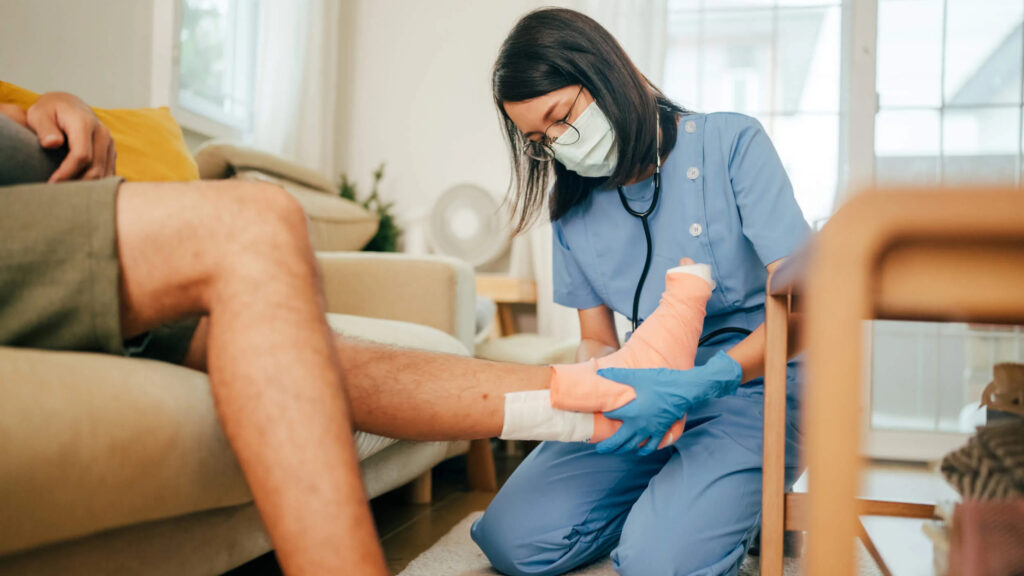
While we’ve armed you with some fantastic Home Wound Care hacks, it’s crucial to recognize that not all wounds can be managed at home. Sometimes, a wound needs professional attention to prevent a serious wound infection or ensure proper healing.
Beyond Home Care: When to Seek Professional Help
Think of your healthcare provider as your ultimate partner in health. While these DIY tips are powerful for minor injuries, there are clear signs that indicate it’s time to step in and get expert medical advice. Don’t hesitate to reach out if you’re ever in doubt – it’s a sign of smart self-care!
Key Warning Signs: When It’s Time to Call the Doctor
Your body is great at communicating, and it often sends clear signals when something isn’t right. Here are the critical red flags that mean you should seek professional medical attention:
- Signs of Severe Wound Infection: We’ve talked about early signs, but if you notice any of these, it indicates a potentially more serious wound infection:
- A high fever (over 100.4°F or 38°C).
- Redness that is rapidly spreading outwards from the wound, possibly with red streaks extending from it.
- Significant, thick, or foul-smelling pus or discharge.
- Pain that is rapidly worsening or becoming unbearable.
- Deep Wounds or Gaping Wounds: If the wound is deep enough that you can see underlying tissue, or if the edges are far apart and don’t easily come together, it may need stitches or other professional closure methods to heal properly and prevent infection.
- Wounds from Animal Bites or Dirty Objects: Wounds from animal bites (including your own pets) carry a high risk of infection due to the bacteria in the animal’s mouth. Similarly, wounds from rusty nails, dirty tools, or other contaminated objects need medical evaluation to assess the risk of tetanus and other infections.
- Wounds Not Showing Improvement: If you’ve been diligent with your Home Wound Care for a few days, and the wound isn’t showing signs of healing – perhaps it’s not getting less red, it’s still very painful, or it seems to be getting worse – it’s time to get it checked out.
- Individuals with Compromised Immune Systems or Underlying Health Conditions: If you have conditions like diabetes, circulatory problems, or a weakened immune system (due to illness or medication), your body’s ability to fight off infection and heal may be impaired. In these cases, it’s often best to consult a doctor for even minor wounds to ensure they are managed correctly and to prevent complications like a serious infected wound.
While these Home Wound Care hacks are powerful tools to empower you, please never hesitate to lean on your healthcare provider. They are your trusted partners in ensuring optimal healing and preventing serious complications. Their expertise can provide reassurance and effective solutions when needed. Taking care of yourself means knowing when to call for backup.
Conclusion
And there you have it – your complete guide to Home Wound Care! We’ve covered everything from the basics of healing to the tell-tale signs of an infected wound and the simple steps you can take to promote faster recovery.
Summary of Key Takeaways: Remember the power of cleanliness – always wash your hands! Embrace gentle care, avoiding harsh scrubbing or irritating products. Prioritize moisture balance, utilizing the right fast healing cream for wounds and products. And finally, never ignore those early warning signs of a potential wound infection! Being proactive in your Home Wound Care is your best defense.
Actionable Insights: Now you’re armed with the knowledge to tackle minor wounds with confidence! Remember to keep your hands clean, choose the right cleaning methods, and leverage those fast healing cream for wounds, natural aids, and a protective bandage to keep your wounds happy and infection-free.
Emotional Reinforcement: By following these simple yet effective hacks, you’re not just healing a wound; you’re nurturing your body’s resilience and ensuring a quicker, more comfortable return to your daily life. You’re taking control of your health and empowering yourself with the tools for effective self-care.
Call to Action: What are your favorite Home Wound Care tips? Do you have any go-to products or strategies that have worked wonders for you? Share them in the comments below! Helping each other is the best way to build a healthy community. And if you found this post helpful, please share it with friends and family. Your well-being, and the well-being of those you care about, is our priority!
Frequently Asked Questions (FAQs)
Q1: How often should I change a bandage on a minor wound?
A: Change it daily, or if it becomes wet or dirty, to maintain a clean healing environment.
Q2: Can I use honey on any wound?
A: While honey has great properties, it’s best to use medical-grade honey specifically for topical wound care. Always consult a doctor for deep or infected wounds.
Q3: What’s the best way to prevent a wound from getting infected?
A: Keep the wound clean, dry (unless using moist healing techniques), covered, and avoid touching it with unwashed hands. Watch for early signs of infection.
Q4: My wound is a little red. Does that mean it’s infected?
A: Some redness and mild swelling can be part of the normal healing process. However, if the redness is spreading, warm to the touch, or accompanied by increased pain or pus, it’s a sign to see a doctor about a potential wound infection.
Q5: What is the most effective type of wound healing medicine for minor cuts?
A: For minor cuts, gentle cleansing with water or saline and a thin layer of petroleum jelly or an antibiotic ointment can be very effective to protect and promote healing, acting as a simple wound healing medicine. Always read product instructions.
Q6: When should I be concerned about a scab?
A: Scabs are a natural protective layer. Avoid picking at them, as this can reopen the wound and increase the risk of wound infection. If a scab looks inflamed, is oozing, or is excessively painful, consult a healthcare professional.


























